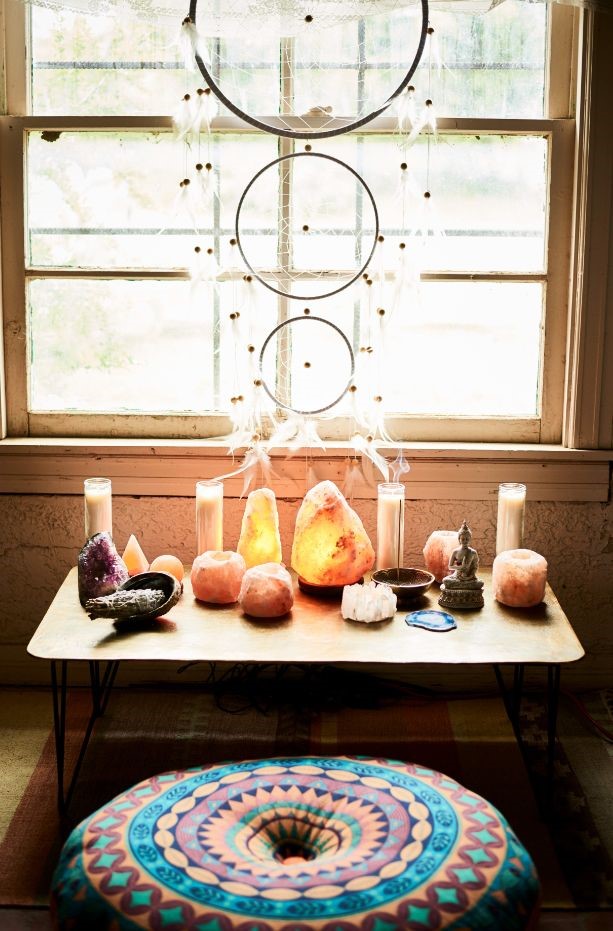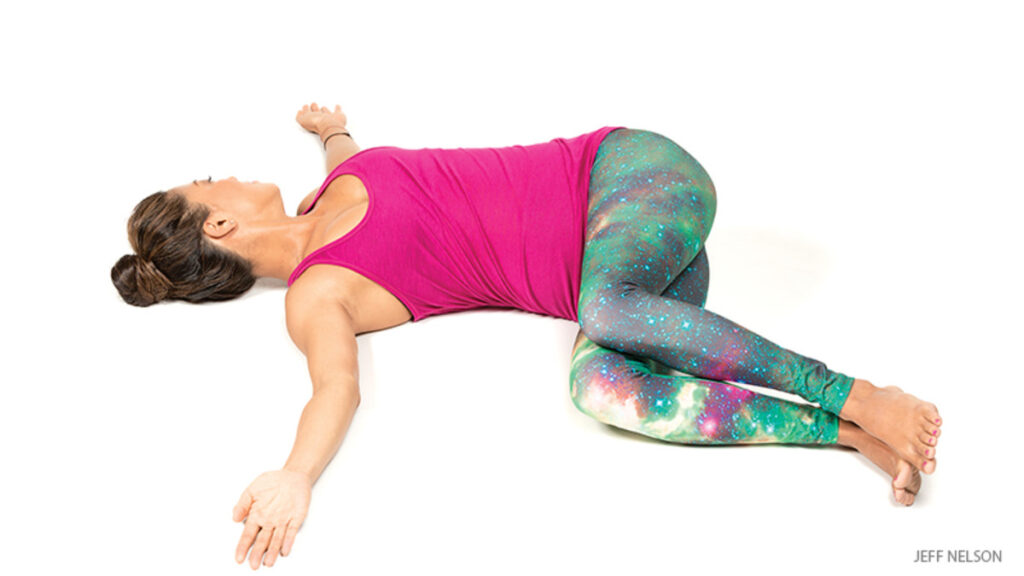
Different Types of Meditation
There are many different ways to meditate, you need to find the one that works for you at this time.
- Focused attention meditation: The attention is focused on a single object during the whole mediation session, the breath, a mantra, an external object or the body. The practitioner practices to become less distracted. Examples are candle gazing, Loving kindness, sound meditation, Pranayama, mantra
- Open monitoring: watching all perceptions, internal and external without judgement, the practitioner allows thoughts, feelings, memories, whatever arises, to flow naturally through their mind trying not to alter or react to what arises, external sounds and smells etc are recognized and seen for what they are not as they are perceived to be. Examples are Mindfulness, vipassana
- Effortless Presence is when the attention is not focused on anything in particular, but reposes on itself – quiet, empty, steady and introverted. Choiceless awareness or pure being: This is the deepest purpose of meditation, to find the effortless inner silence and deeper state of consciousness, where the object of focus and the process itself is left behind and there is only the true self of the practitioner left as pure presence. Examples are dzochen, and some forms of Raja yoga
- Focus on the Body: Moving meditation where we focus the mind on slow movements of the body, as your mind scans your body, noticing feelings, sensations, energy, allowing your body to relax completely, it retains its presence in the moment. Examples are: Yoga Nidra, and walking meditation
Homework – Setting up your Meditation Environment
Prepare your setting by finding a time and place where you are less likely to be disturbed. Ensure that you are sitting in a comfortable position, either in a chair or a cross-legged position with a pillow supporting your buttocks. You will probably find that your body starts to ache. Begin by sitting for short periods of time, 5 or 10 minutes is enough and gradually build up your stamina. There are ways to meditate through discomfort and pain, and even to rid your body of pain, but that will come later with practice.
Choose a corner of a room, or a spot in your home where you can set up a quiet space. You can sit somewhere simple, in front of a plain wall, or set up your space with sacred objects, maybe a statue or picture of Buddha or Ganesh, Jesus or Mary. whatever resonates with you. An object is not an idol, an object will help your mind focus. You could even make an alter on a little table in a cupboard to sit in front of for your practice. Your space might have little plants or crystals or a flower. You could light candles, burn incense or essential oils. Essential oils will affect your mood so choose the scent carefully; earthy smells like sandalwood, frankincense and cedarwood are good; rose and geranium will help heal sadness; citrus scents will lift your spirits. Preparing your space could be part of your ritual.
Don’t sit in front of something distracting, like the TV or your computer desk.
Sit on something comfortable, like a cushion on the floor with your legs crossed comfortably. A meditation cushion is perfect, or you could use a folded blanket. You can sit in a chair with your feet flat on the floor, not crossed at the ankles. You want your hips higher than your knees. If you are short, rest your feet on something, if you are tall, sit on a pillow so your back won’t start to hurt. It is important to be comfortable as discomfort will be a distraction. Your back needs to be strong. One of the purposes of yoga is to make the body strong for meditation. If your back gets tired, lean against a wall or sit in a chair. Monks just sit on a mat on the floor, but that is really hard and uncomfortable.
Your back needs to be straight, but not stiff, with a natural curve in your lower spine. Stretch up through the crown of the head, chin slightly towards your chest, but not looking down, your arms are spread slightly, like the wings of an eagle. Place your hands on your knees or folded in your lap. Traditionally, your right foot is placed on your left thigh in half lotus posture and have your right hand resting in your left hand in your lap.
The eyes are somewhat open and the gaze looks down at a 45º past the nose. Your gaze needs to be light, don’t stare or do anything special, just let your gaze rest. Having your eyes open will help you stay awake as meditation can make you sleepy, especially if you are new to the practice. Even the monks fall asleep. Alternatively, gently close down the eyes and take your focus to the third eye point between the eye brows (Ajna chakra).
Begin by just sitting in this posture for a few minutes in your environment. If your attention wanders away, just gently bring it back to your body and the environment. The key word here is “gently.” Your body is your gateway to the present moment. Slowly scan your body from foot to head, taking time to consciously relax every muscle. Settle your awareness on your breath, as it slowly fills and empties from your chest. Allow your mind to cease its chatter by quietly observing your thoughts as they arise and pass through you mind. Exist as the quiet present space around the thoughts – the silent witness to experience.
Your mind WILL wander; that’s part of what you will notice with your mindfulness: minds wander. When you notice that yours has wandered, come back again to body, the breath and your space.
Focus on the Breath
Starting from 27, count down your breath to zero, breathing in 27, breathing out 27, breathing in 26 breathing out 26 etc, count in time with your own breath without altering your breath. If you lose count or miss a number, don’t think about it, don’t even think about losing count, just go back to 27 and start counting down again, when you get to zero, go back to 27 and count down again.
Notice your breath, feel the movement of air through your nostrils, the cool air as you breath in, the warm air as you breath out, feel the slight movement of air on your upper lip, feel the air moving down your throat into your lungs. Feel the gentle rise and fall of your chest you breathe.
If you notice your mind wandering away into thought, don’t worry, gently come back to focusing on your breath and start counting down again. The word here is gently. We need to be kind to our minds, don’t get upset with yourself or think that you are doing it wrong, just gently bring your focus back to your breath and continue counting.
(It doesn’t have to be 27, 27 is my favorite number. You could start from your favorite number)
Sit for 5 or 10 minutes to begin, and gradually increase your time.
This is also a good technique that may help you fall asleep, though you might need to start at a higher number.
Moving Meditation

Practice lying on your back with knees bent, dropping your knees from side to side. Inhale as you bring your knees up, exhale as you lower your knees.
Count your breath making it even, the same number of counts to lower the knees to the floor and bring them back up. Inhale 3 counts as your knees come up, exhale 3 counts as they lower down. Do about 5 sets to get in the rhythm.
Then introduce turning your head to look in the opposite direction in time with your knees. Still keep mentally counting 3 as you move the knees from side to side, with the head also moving from side to side.
Next, start to Increase the count of your exhalation by one count. 4 counts in as your knees come up, 3 counts as they lower back down. Keep moving your head in time.
Continue for 5 sets, then increase the exhalation by another count. 5 counts as your knees come up, 3 counts as they lower down. Keep your head moving in time.
After another 5 sets increase your exhalations to 6 counts as your knees come up, 3 counts as you exhale as they lower. while you continue moving your head in time with your breath and the movement of your knees.
Don’t let the inhalations become more than twice the count of the inhalations.
You can continue as long as your like.
Increasing your exhalations calms the mind and by focusing your mind on the movements and your breath, it won’t be thinking of other thoughts.